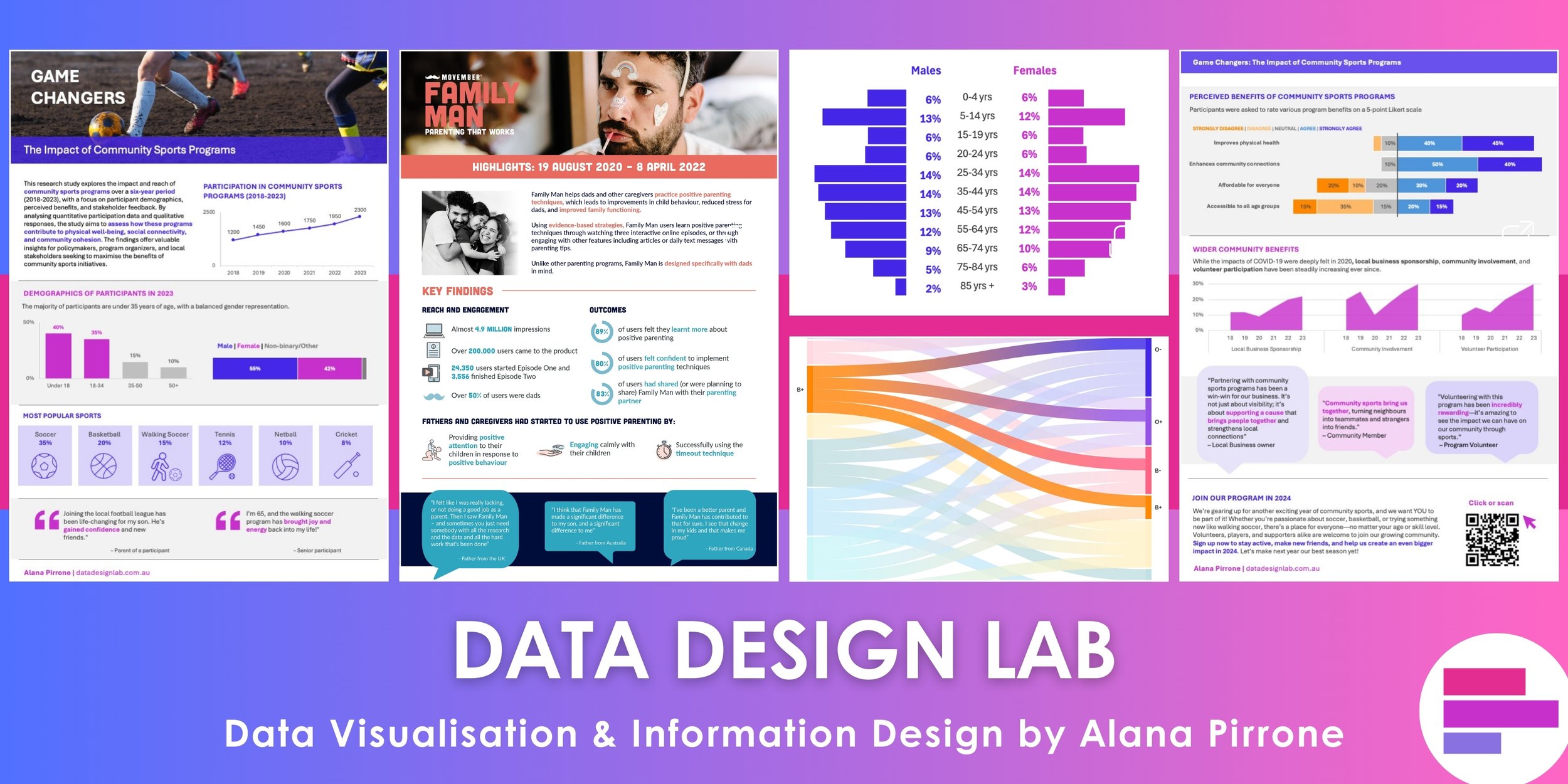My old high school recently sent out their alumni magazine which featured the VCE results of the Class of 2018. The report was lovely and well designed, but one thing in particular caught my eye. They used a donut chart to display the university courses that the students were accepted into.
The chart looked a little something like this…
I have changed the data slightly to deidentify the school.
Pie chart of university courses
So, what’s wrong with that you ask? Five years ago, I probably would have told you, “nothing, it looks great”, but the more I study data visualisation the more I understand why pie/donut charts are just trouble.
Pie charts rely on our audience to decode the quantitative information by judging and comparing angles and area, which is actually quite difficult to do. Studies have shown us that it is far easier for us to compare length and position (bar and line chart), than area and angle (1,2).
With a donut chart (which is just a pie chart with a hole in the middle - stay with me, don’t get hungry), we are forced to compare the arc lengths in the middle of the circle (3), which is even more difficult.
Pie charts rely on our ability to compare area and angle. Donut charts rely on our ability to compare arc lengths
All of these issues are further compounded when we start adding 3D charts to the mix, which distorts areas and angles. I have said it once and I will say it again, don’t use 3D charts!
So, let’s work through this university course donut chart and see how we could improve it. Remember, our job as data visualisation specialists is to present the information in the most effective way so our audience is able to understand and interpret the data with very little effort.
One solution, I hear you say, is to put the values directly in the donut chart. Let’s see what that looks like.
Values placed in the donut chart
As with any chart that has the key off to the side, our eyes have to dart back and forth to try and connect the colour to the donut slice. Have you also noticed the colour choices of the donut chart? The different shades of greens and oranges make it that little bit more difficult to match up the key to the slices. So, let’s now add the labels and the values directly to the donut, which is what I normally do.
Labels and values in the donut chart
Now it’s a little easier to read, maybe a little messier too. But the big question is, are we actually looking at the donut, or just reading the labels and values? In his newsletter, “Save the pies for dessert”, Stephen Few comments:
“Why show a picture of the data if the picture can’t be decoded and doesn’t present the information more meaningfully? The answer is: You shouldn’t. Graphs are useful when a picture of the data makes meaningful relationships visible (patterns, trends, and exceptions) that could not be easily discerned from a table of the same data.”
He is right, we get no more value from having the data presented as a donut with values directly labelled than as a plain old table.
So how would I redo this? A horizontal bar. It might seem boring, but it is easy to understand and make comparisons between each category. As I mentioned before, we are much more capable of comparing length (bar) and position (line) than area and angle. Never underestimate the value of a bar chart.
Horizontal bar chart
I’ve ordered the data from biggest to smallest. Labelled each bar for easy understanding and got rid of the “noise” by just using the one colour. As the category labels were quite long, a horizontal bar worked better than a vertical one. I’ve also added a descriptive heading and shown the total 100% down the bottom.
Compare the before and after. Which one is easier to draw meaning from?
Pie charts might be aesthetically pleasing (when done well), but as I’ve shown you above, they are not the most efficient or effective way of displaying data. Think of it with this analogy: it’s like buying a great pair of shoes that look amazing but are horribly uncomfortable, so you never wear them. What’s the point?
It’s a hard relationship to break up. It’s taken me a lot longer than it should have. I even used a donut in last year’s annual report. But don’t feel bad, even Steve Jobs used one… in 3D!
References:
1. Few, S. “Save the Pies for Dessert” Visual Business Intelligence Newsletter, August 2007.
2. Evergreen, S. Presenting Data Effectively, 2nd Edition. Sage Publications. 2018.
3. Nussbaumer Knaflic, C. Storytelling with Data. Wiley Publications. 2015






